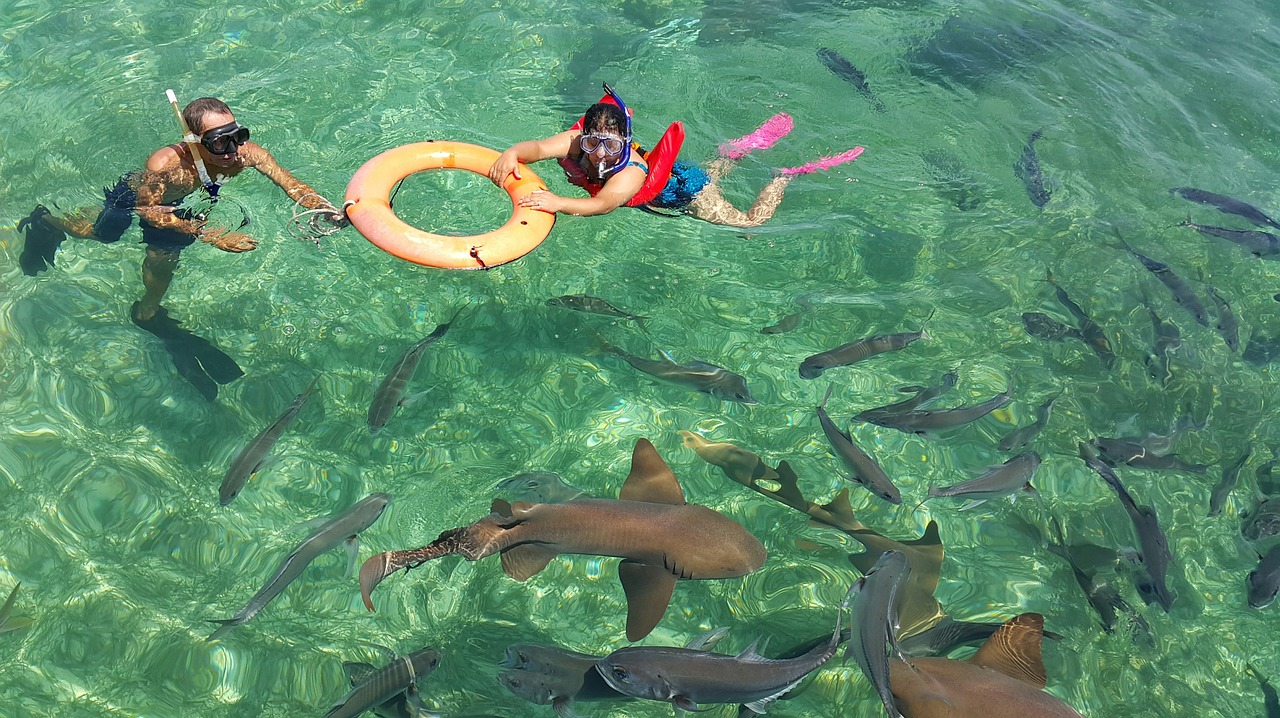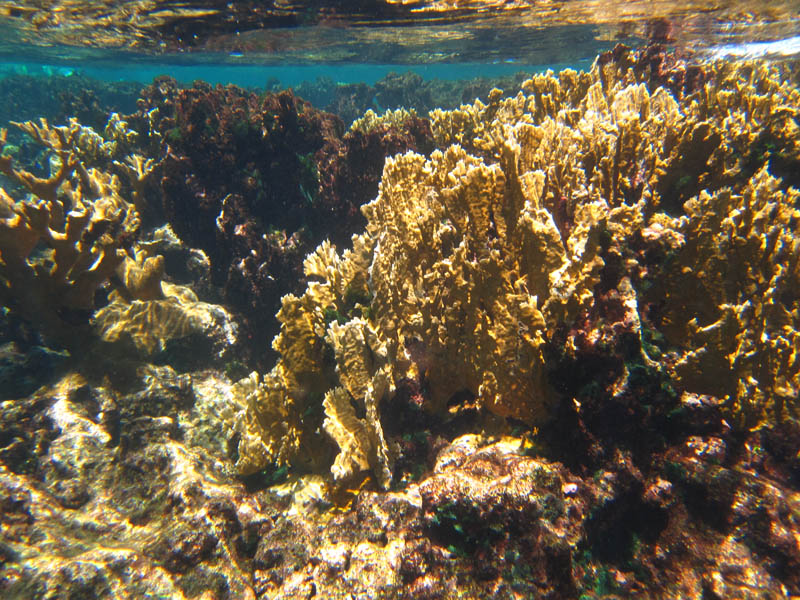1. Ambergris Caye, Belize

Belize has many opportunities to get up close and personal with eels, rays, and all kinds of brightly colored fish. There are hundreds of cayes and atolls that dot the Caribbean coastline, filled with colorful coral sunken beneath the turquoise waters. Some of the best options for divers and snorkelers are found off of Ambergris Caye, including the Hol Chan Marine Reserve and the self-explanatory shark-ray alley teeming with nurse sharks happy to let you live out your swimming-with-the-sharks fantasies.
2. Ilha Grande, Brazil

Off the coast of Brazil, halfway between São Paolo and Rio de Janeiro,
sits the wilderness wonderland of Ilha Grande. There are hotels on the
island, but it manages to feel largely untouched with monkey-filled
jungles surrounded by brilliant blue waters teeming with brilliantly
colored fish. Dive into the warm waters of the Blue Lagoon (Lagoa Azul)
to swim with seahorses, ogle the underwater coves, and follow a turtle
or angelfish through a sunken jungle.
3. The Big Island, Hawaii
.jpg)
The entire Hawaiian archipelago is surrounded by incredible snorkeling spots, but the Big Island—with more square footage than all the other islands combined—has the most to offer. The underwater state park at Kealakekua Bay not only has technicolor coral and colorful fish, but it a good dose of history, too, as it marks the spot where Captain James Cook landed on the island. Hit the water near the Captain Cook Monument to see dolphins, turtles and more.
4. Palawan, The Philippines
While the Philippines may not seem like the most obvious snorkeling
destination, the waters surrounding the 7,000 islands in the archipelago
make up a diverse eco-system filled with breathtaking wildlife. There
is no shortage of snorkeling opportunities from diving into the Bay of
Donsol for the chance to swim with whale sharks or visiting the coral
reefs outside Noa Noa Island. The stunning Palawan island offers
something for every underwater explorer though. Visit the island’s
fish-filled lagoons, dive into Honda Bay, explore Tubbataha reef, and
plan a daytrip to meet the underwater inhabitants of Starfish and Cowrie
Island.
5. Buck Island, St. Croix, USVI

Visits to national parks tend to conjure up visions of majestic
mountains and roaming buffalo, but on Buck Island in the U.S. Virgin
Island you’re more likely to run into a friendly octopus than a
picnic-basket-stealing bear. Snorkel between the elkhorn coral barrier
reefs under Buck Island’s brilliant blue waters as you follow a colorful
parrot fish along an underwater trail through this sunken national
treasure.
6. Komodo Island, Indonesia

While the giant lizards that call this island home get most of the attention from visitors, Komodo has some fascinating inhabitants under the water, too. Head to Pink Beach to swim with rays, schools of groupers, and hawksbill turtles in the undersea garden that grows there. Alternatively, visit the sea surrounding the Komodo National Park, which offers unmatched underwater exploration with over 1000 species of fish 260 types of coral, and 14 types of endangered whales, dolphins, and giant turtles.
7. The Maldives

The Maldives are one of the most beautiful destinations in the world, but some of the islands’ greatest sights lie beneath the waves. The tiny islands that make up the archipelago are surrounded by aquamarine water that is home to some 700 species of fish, including tuna wahoos, and butterfly fish. The water holds a multitude of other marine wonders, too, like sharks, turtles, anemones, coral, and perhaps a friendly octopus or two.
8. Eil Malk Island, Palau

Only one of the marine lakes that dot Palau is open to snorkeling, but
it’s definitely worth the trip. Jellyfish Lake on the uninhabited island
of Eil Malk lives up to its name, filled with millions of golden
jellyfish that have thrived in the isolated lake for hundreds, if not
thousands, of years. For a truly other worldly experience, visitors can
snorkel among the floating, gelatinous creatures. While jellyfish are
known for their stings, these have a non-poisonous sting, as they eat
algae—not other animals—and reportedly, their stings can hardly be felt
by humans who take the plunge into their waters.
9. Great Barrier Reef, Australia
It’s impossible to talk about the world’s best snorkeling spots without mentioning the largest coral reef ecosystem in the world—Australia’s Great Barrier Reef. The reef is actually made up of 2,900 individual reefs that stretch over 1,400 miles off the Australian shoreline. Eye-popping coral, brilliant marine life, barracuda, manta rays, and the bones of ships that crashed on the reef all make the Great Barrier Reef a must-visit destination for ocean aficionados.
10. Galapagos Islands, Ecuador

The land that makes up the 19 volcanic islands that form the Galapagos
offers a glimpse into the natural world of finches, iguanas, and
tortoises that inspired Charles Darwin, but beneath the waves that
surround those islands lies an equally fascinating natural treasure
trove. The various islands is home to diverse marine life—sea turtles,
dolphins, orcas, humpback whales, Galapagos penguins, fur seals, and sea
lions.